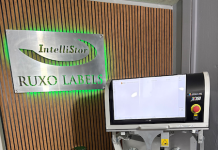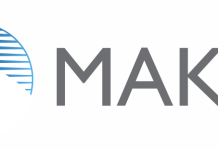According to Laurel Brunner, writing for the Verdigris Project, Covid-19 is not the first virus to bring devastation to communities and it will not be the last. Now more than ever printing businesses must work together towards a common goal: survival.
Sadly we are seeing terrible effects of the Corornavirus crisis on the graphics industry, and clearly we can never expect a return to business as usual. Not a day passes without business failures, collapses, administration proceedings, closures, and the problem seems particularly acute for small businesses. These are the types of companies, often employing less than a dozen people, that make up the bulk of the worldwide graphics industry. Without these small to medium sized businesses, the traditional printing industry will look very different.
Governments all around the world are offering support in various forms, some of it effective and some of it not. And there is much work being done to identify ways of rewiring economies in the aftermath of the crisis to make them more sustainable. Sustainability is not just about environmental impact. It means survival and the ability of an economy or business sector to withstand future shocks. The graphics industry has been absorbing these for many years, so it might be well placed for restructuring based on business and environmental sustainability.
Consolidation has been going on for a long time as media communications models change. The consolidations have been happening within the manufacturing community and amongst buyers of printing systems for all applications. In the wake of automation and consolidation, the typical profile of print service providers is changing.
If there is to be a rewiring of the graphics industry it requires dialogue between industry associations, their members and non-members, and policy makers. It requires cogent discussion of how to support new business development with training and funding at grass roots. It requires recognition that automation in the graphics industry requires a different mentality when it comes to process management: appreciation of information technology is by far the most important characteristic for people working in this industry.
People must understand digital data management in order to set up effiicient and profitable colour managed workflows, from file origination through to logistics and distribution and all points in-between. That means knowing your PDF from native files, from CIE L*a*b* and RGB, from .tif to .xsl. And it means understanding that the graphics supply chain is in the data business. If industry representatives don’t get that, they cannot devise future strategies to support the future welfare of the graphics industry and the people it employs and serves.
This article was produced by the Verdigris Project, an industry initiative intended to raise awareness of print’s positive environmental impact. Verdigris is supported by: Agfa Graphics (www.Agfa.com), Digital Dots (www.digitaldots.org), EFI (www.efi.com), FESPA (www.fespa.com), Fujifilm (www.fujifilm.com/sustainability/), HP (www.hp.com), Kodak (www.Kodak.com/go/sustainability), Practical Publishing (www.practicalpublishing.co.za), Ricoh (www.ricoh.com), Unity Publishing (http://unity-publishing.co.uk) and Xeikon (www.xeikon.com).
[sc name=”submit-news” ]
[sc name=”whatsapp_subscribe” ]
THE VERDIGRIS PROJECT
http://verdigrisproject.com/





















